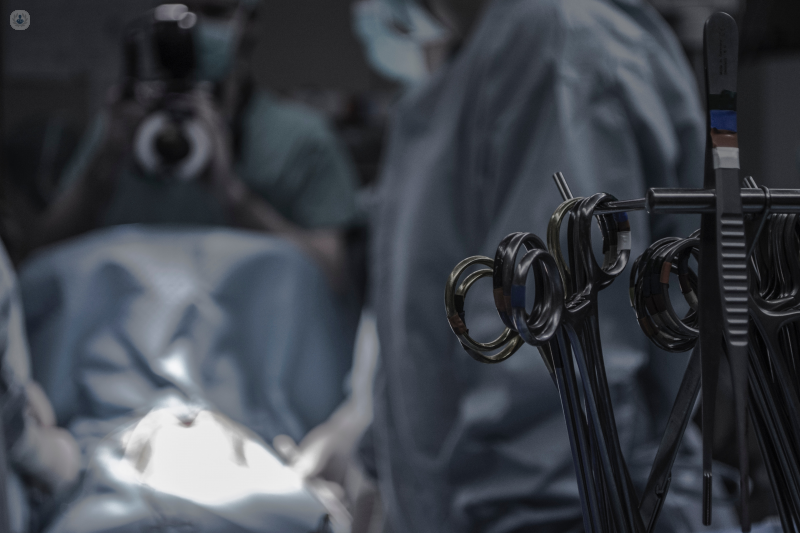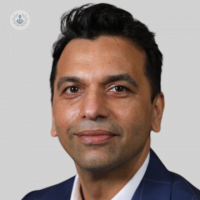How to perform difficult cholecystectomies
Written by:Severe tummy pain? Vomiting? Skin and/or eyes turning a shade of yellow? All classic signs of gallstones. When these symptoms strike, the solution is usually surgery. But cholecystectomies can be complicated procedures, requiring a highly-trained surgeon with skills in laparoscopy. Leading surgeon Mr Thomas Satyadas is here to explain.

What is a cholecystectomy?
Cholecystectomy is a common procedure to remove the gallbladder. The gallbladder is a small organ, like a pouch, located near the liver. It stores bile produced by the liver and releases it into the digestive tract after eating, where it helps break down fatty food. However, we don’t need a gallbladder to survive – it can be removed and the pathway from the liver to the intestines can be reconstructed to allow bile to continue to flow.
Cholecystectomy may need to be performed if the gallbladder is causing problems, such as gallstones. These are small, hard objects that can form in the bile and cause irritation and painful blockages in the gallbladder. Abdominal pain, jaundice, and vomiting are among the signs that cholecystectomy may be needed.
Preoperative planning
Before performing a cholecystectomy, the patient’s medical history is taken, with particular attention to previous interventions, especially in the abdomen and hepatobiliary system.
Scans will have been taken to diagnose the gallstones, and these must be analysed carefully.
The patient is taken through the details of the surgery, including the risks and potential complications.
Perioperative
The surgeon and anaesthetist will plan the pain-relieving methods that will be employed both during and after the cholecystectomy. A TAP block to anaesthetise the nerves of the interior abdominal wall is used for all patients.
A radiographer is also usually involved in order to perform scans such as cholangiography during the procedure to aid the surgeon in the process.
The operative theatre is set up with:
- A good camera and 30° telescope
- Good laparoscopic equipment
- Bipolar diathermy (if available)
The procedure
Cholecystectomy can be performed laparoscopically (minimally invasively), with the surgeon operating through small holes created via tiny incisions in the patient’s abdomen. These ports must be precisely placed to give the surgeon room to perform suturing and other advanced laparoscopic manoeuvres with maximised efficiency of hand movements.
The surgeon identifies the Rouviere’s sulcrus (the fissure of Gans) – a structure on the liver that provides an anatomical landmark for starting the dissection.
Imaging techniques may be used during the procedure to assess the boundaries of the gallbladder and help with decision-making, such as whether to perform a subtotal cholecystectomy, and, if so, where to transect the gallbladder.
If there is a Hartmann’s pouch and there are stones present, these should be removed. A 30° telescope provides the surgeon an excellent view inside the Hartmann’s pouch, which should be sutured after the stones are removed to help prevent bile from leaking after the cholecystectomy.
I personally leave a drain if performing a subtotal cholecystectomy and this can be removed depending on the nature and quantity of the contents.
To book a consultation with Mr Satyadas, visit his Top Doctors profile


